About the Project
Prototyping a Digital Home for the Furious Flower Poetry Center Archive
Visit the Prototype’s Home Page

Now in its third decade, the Furious Flower Poetry Center (FFPC) has been a driving force in showcasing, promoting, and analyzing African American poetry nationally and internationally. Over the years, it has amassed a hugely valuable archive, including hundreds of hours video from all three Furious Flower conferences. In collaboration with JMU Libraries, the FFPC secured grants to properly digitize that material, and the next stage in that project is to create a digital home for that and other important materials. During the Spring 2019 semester, students from six majors worked with professors from four disciplines and library specialists to begin the work of building a prototype for an online repository for this digital archive. They did so through “Innovating the Archives,” a team-taught, multidisciplinary course supported by JMU X-Labs and three colleges at JMU: the College of Arts and Letters, the College of Education, and the School of Art, Design, and Art History. The thirty-three students who took the “Innovating the Archives” course worked with six faculty and a host of collaborators to produce this website, which is a fully functional, professional-grade prototype of what will become the Furious Flower Poetry Center online archive. This prototype features the entire corpus of materials that relate to the first Furious Flower conference in 1994. Throughout the semester students deepened their appreciation of African American poetry, history, and art. Furthermore, they have improved their research, design, collaboration, project management, and problem solving skills. They worked in teams for the entire semester, and the teams collaborated intensively with each other as they built the site. Below, the student teams describe their contributions:
Design

(From left to right) Kathy DeLoria (Graphic Design), Noah Johnson (Graphic Design), Jordan Schnarr (Graphic Design), David Hardy (Assistant Prof. Graphic Design), Atika Chadha (Graphic Design), Lydia Riddle (Graphic Design), Emma Steinhobel (Graphic Design).
As graphic design majors, our main function was to visualize and implement a highly visual and functional archive for the 1994 Furious Flower Poetry conference. We worked closely with all of the other groups taking this class to distill their ideas into viable goals and to develop a distinct visual style for the final website, which is hand-coded. Throughout this experience, we have gained a deeper understanding of poetry and the culture around it, and we have worked with the rest of the class to produce a site we believe reflects the vision and importance of the Furious Flower Poetry Center.
Education

(From Left to right) Ana Hereth (English and Secondary Education), Caitlyn Maginniss (English and Secondary Education), Ryland Jones (English and Secondary Education), Mary Beth Cancienne (PhD Professor of English Education).
As a team of pre-service secondary education English teachers, we worked to create high quality content for both teachers and students that can effectively do justice to the phenomenal materials contained within the Furious Flower archive. The resources we have written aim to expand the literature and history taught in schools to achieve a more accurate and all-encompassing picture of American history. Through lifting up the voices of these exceptional artists, we as educators will be better suited to uplift the students in our own classrooms.
History and Topics

We worked diligently to contextualize the archives of the 1994 Furious Flower Conference through three themes: The Struggle for Freedom and the Poetic Response; Language, Music, and the Vernacular in African American Poetry; and Seeding the Future of African American Poetry. Our group’s majors include: Justice Studies (Pre-Law), Public Policy, History, School of Media Arts and Design, Anthropology, and History Secondary Education. We collaborated directly with Dr. Joanne Gabbin to capture the primary themes of the 1994 Furious Flower Conference and use those themes to bring the artistic and intellectual work of its participants to life for the next generation of poetry lovers.
Media and Modes
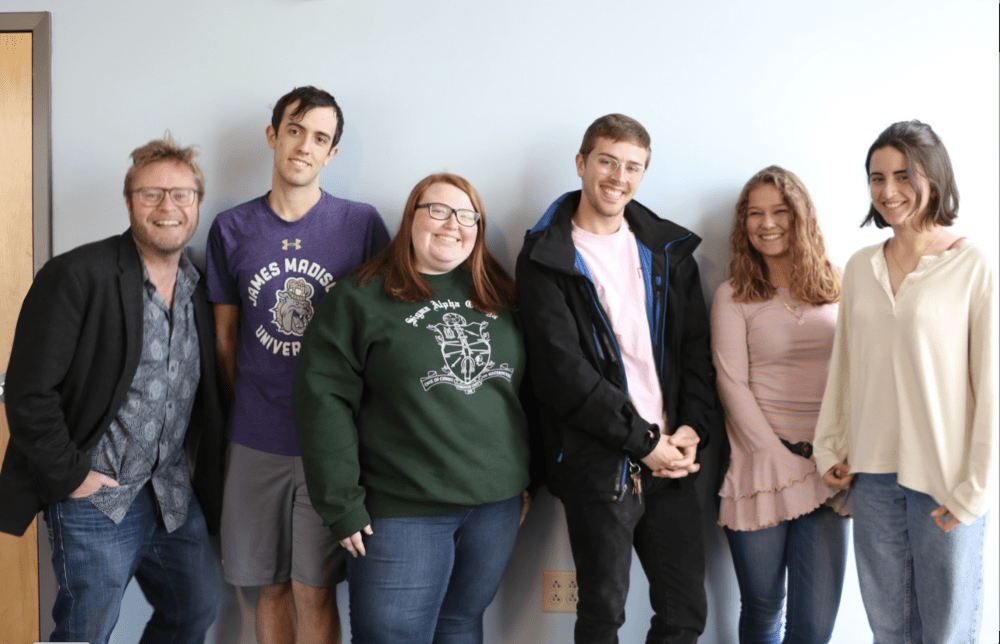
(From Left to Right) Seán McCarthy (Associate Professor of WRTC), Kyle Ramey (Writing Rhetoric and Technical Communication), Christina D. Gillespie (Communication Studies), Raven Moon (Writing Rhetoric and Technical Communication), Maddie DiStefano (Writing Rhetoric and Technical Communication), Susannah Hosay (Justice Studies and School of Media Arts and Design).
We are a group of Writing Studies, Communications, Justice Studies and Media Arts and Design majors. We developed the interactive program component of the website, worked on preparing the video throughout, and collaborated intensively with the other groups. We also researched social media strategies and developed a comprehensive guide for how to spread knowledge about the Furious Flower Poetry Center and the prototype website we have built for its archive.
Poets
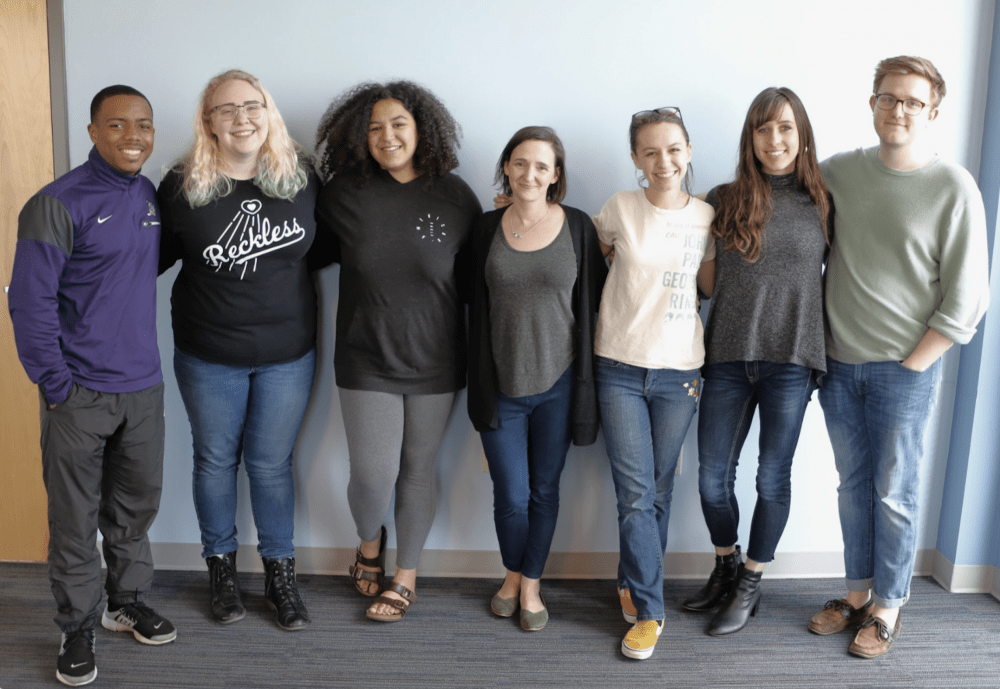
Norman Jones III (Public Policy and Administration), Lillie Jacob (English), Jessica Carter (English), Mollie Godfrey (Associate Professor of English), Hannah Steinhauer (Mathematics), Ardyn Tennyson (English), Evan Nicholls (English).
We are a team of English, Public Policy, and Math majors. We began work by immersing ourselves in the 1994 Furious Flower Conference archive and finding all of the photos and videos relating to each individual poet, critic, and performer listed in the conference program. Once we had located all of these materials, we decided to make the videos more accessible to users by cutting them into shorter clips and organizing them by type (interviews, talks, poetry readings). We also wrote short biographies for each poet, critic, or performer, and used our knowledge of the archive to write other parts of the website, such as the Collection Highlights and the page on Dr. Joanne Gabbin. Finally, we researched thirty featured poems and provided annotations, which can be accessed by using the Hypothes.is plugin on various pages throughout this site.
Fostering a Love of Poetry
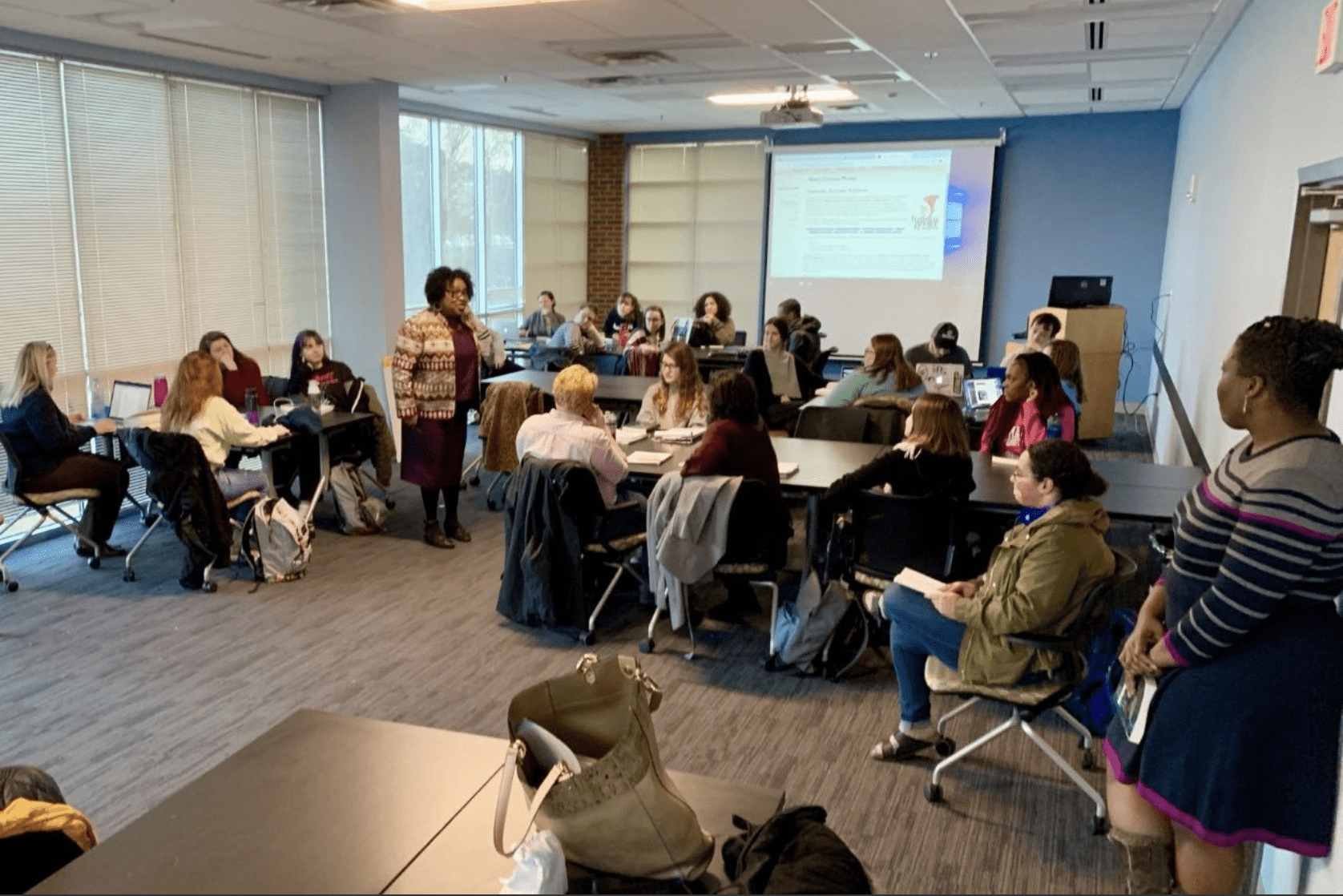
Dr. Joanne Gabbin discussing and analysing poetry with the class.
Because the students in “Innovating the Archives” came from so many majors and backgrounds, we made sure that reading poetry written by the poets who attended the 1994 conference was a central part of the classroom experience. In addition to discussing this poetry with Dr. Gabbin, students also engaged in writing workshops led by Poet-in-Residence Lauren Alleyne, in which they wrote their own poems inspired by Furious Flower poets.
Every class we read poems from poets that attended the 1994 Furious Flower Conference. This allowed students the opportunity to better connect with the materials that are being archived. In addition, students were also able to better understand the historical and cultural significance of African American Poetry and the role Furious Flowers has had in literary landscape. Students did not focus solely on understanding African American poetry, but also on writing poetry of their own–including fill-in-the-blank poems and centos (collage poems) inspired by Furious Flower poets.
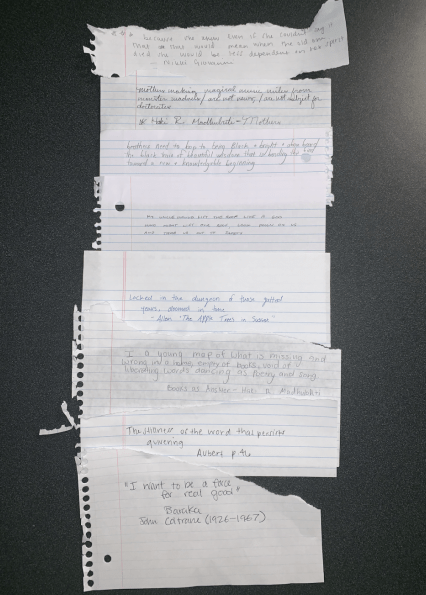
A cento, a collage poem written by a group of students.
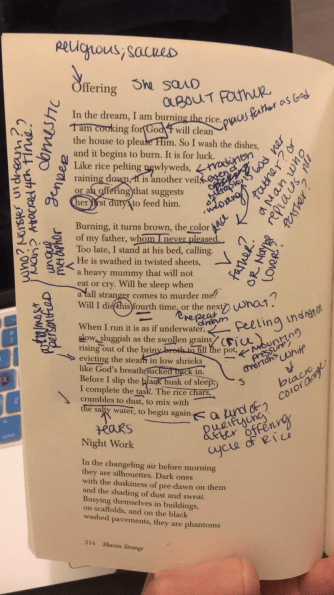
A poem annotated by a student in the course.
The FFPC and the NMAAHC
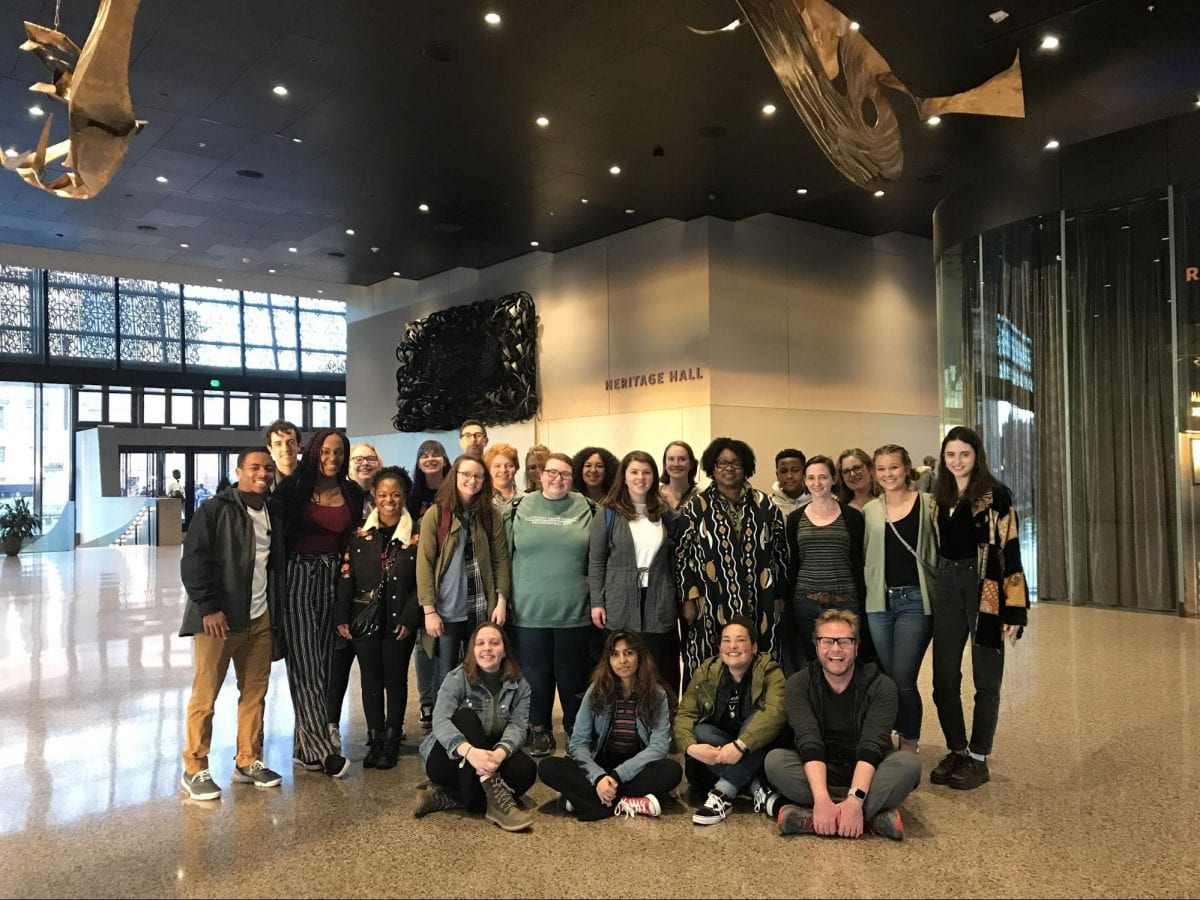
The Innovating the Archives Team on a visit to the National Museum of African American History and Culture, February 2019.
The FFPC donated several books from its archive to the National Museum of African American History and Culture, and Furious Flower will celebrate its 25th Anniversary at the National Museum in September 2019. In February 2019, students and faculty from the “Innovating the Archives” course visited the museum as part of their research into African American history and culture. During that trip, FFPC founder Joanne Gabbin explained the Furious Flower Poetry Center’s relationship with the national museum: